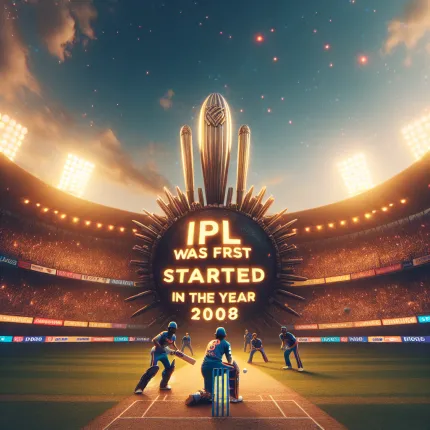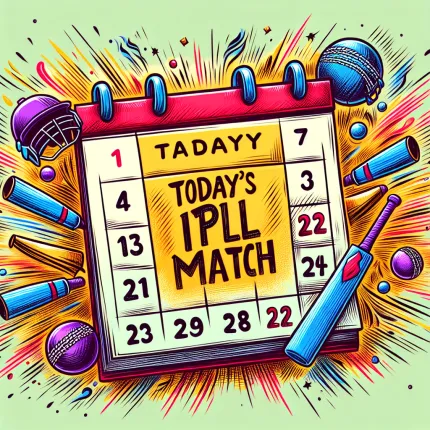
The Indian Premier League (IPL) is not just a cricket tournament; it is a cultural phenomenon that has captivated millions of fans worldwide. Since its inception in 2008, the IPL has grown exponentially, becoming one of the most lucrative and popular sporting events globally. One of the critical factors contributing to its success is the strategic timing of the tournament. This article delves into the intricacies of the IPL's timing, exploring how it impacts players, fans, broadcasters, and the cricketing calendar.
Understanding the IPL Schedule
The IPL typically takes place during the Indian summer, from late March to early June. This period is strategically chosen to maximize viewership and participation. The timing aligns with several key factors:
- School and College Holidays: The IPL coincides with the summer vacation period in India, allowing students and families to engage with the tournament without academic distractions.
- Weather Conditions: The dry and warm weather during these months is ideal for cricket, minimizing the risk of rain interruptions.
- International Cricket Calendar: The IPL is scheduled to avoid clashes with major international cricket tournaments, ensuring the availability of top international players.
The Impact of Timing on Players
The timing of the IPL has significant implications for players, both domestic and international. For many cricketers, the IPL is a lucrative opportunity to showcase their skills on a global stage. However, the timing can also present challenges:
- Player Fatigue: The IPL's schedule often follows a busy international season, leading to concerns about player fatigue and injuries.
- Balancing Commitments: International players must balance their national team commitments with IPL participation, sometimes leading to conflicts.
- Opportunity for Young Talent: The timing allows young Indian players to gain exposure and experience, as many international stars may be unavailable due to national duties.
Fan Engagement and Viewership
The IPL's timing is crucial for maximizing fan engagement and viewership. The tournament's schedule is designed to capture the attention of a diverse audience:
- Prime Time Matches: Most IPL matches are scheduled during prime time, ensuring maximum viewership across different time zones.
- Weekend Double-Headers: The inclusion of double-header matches on weekends caters to fans who have more leisure time, boosting attendance and viewership.
- Festive Season: The IPL often coincides with Indian festivals like Holi and Easter, adding to the celebratory atmosphere and increasing fan participation.
Broadcasting and Commercial Considerations
The timing of the IPL is also influenced by broadcasting and commercial interests. The tournament is a significant revenue generator for broadcasters and sponsors:
- Advertising Revenue: The IPL's prime time slots attract high advertising rates, making it a lucrative opportunity for broadcasters.
- Global Audience: The timing allows for a global audience, with matches scheduled to accommodate viewers in different regions, enhancing the tournament's international appeal.
- Sponsorship Deals: The IPL's timing aligns with the marketing strategies of sponsors, who leverage the tournament's popularity to promote their brands.
Case Studies: Timing Adjustments and Their Impact
Over the years, the IPL has faced challenges that necessitated adjustments to its timing. These case studies highlight the impact of such changes:
IPL 2009: The South Africa Edition
In 2009, the IPL was moved to South Africa due to security concerns arising from the Indian general elections. The change in timing and location posed logistical challenges but also offered new opportunities:
- Global Exposure: The move to South Africa expanded the IPL's global reach, attracting new fans and increasing international viewership.
- Operational Challenges: The change in timing required adjustments in broadcasting schedules and logistical planning, impacting teams and organizers.
IPL 2020: The Pandemic Effect
The COVID-19 pandemic forced the IPL to be rescheduled to September-November 2020, with matches held in the United Arab Emirates. This unprecedented change had several implications:
- Bio-Secure Environment: The timing allowed for the creation of a bio-secure bubble, ensuring player safety and the continuation of the tournament.
- Viewer Engagement: The rescheduling to a later part of the year saw increased viewership as fans were eager for live sports during the pandemic.
The Future of IPL Timing
As the IPL continues to evolve, its timing will remain a critical factor in its success. Several considerations will shape future scheduling decisions:
- Climate Change: Changing weather patterns may necessitate adjustments to the tournament's timing to avoid extreme heat or rain.
- International Calendar: The increasing number of international cricket tournaments may require more strategic scheduling to ensure player availability.
- Technological Advancements: Innovations in broadcasting and digital platforms may influence the timing to maximize global reach and fan engagement.
Conclusion
The timing of the IPL is a complex and strategic decision that impacts every aspect of the tournament, from player participation to fan engagement and commercial success. By aligning the schedule with school holidays, weather conditions, and the international cricket calendar, the IPL has positioned itself as a premier sporting event. As the tournament continues to grow, its timing will remain a crucial factor in maintaining its popularity and global appeal. The IPL's ability to adapt to changing circumstances, as demonstrated in past editions, will be key to its continued success in the future.





